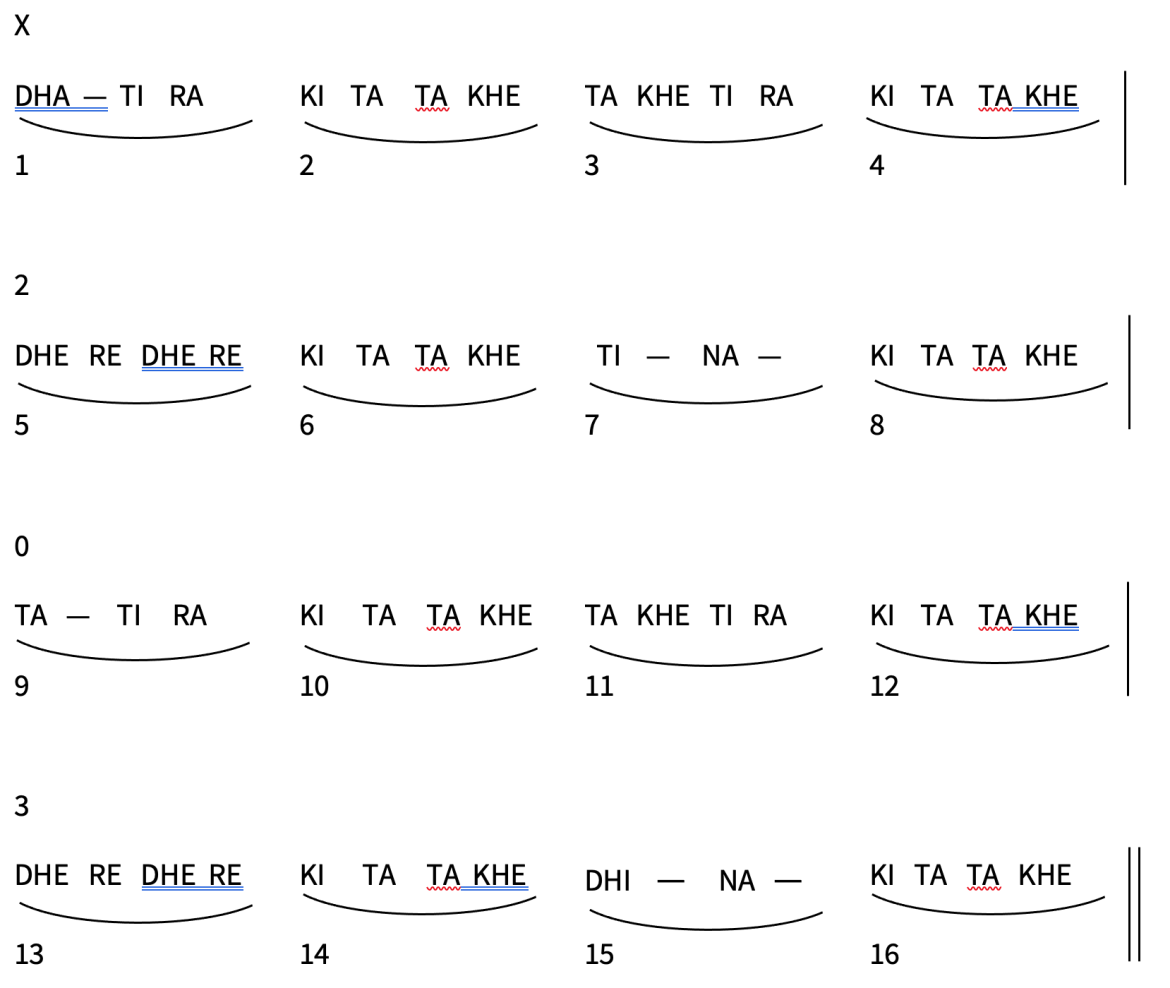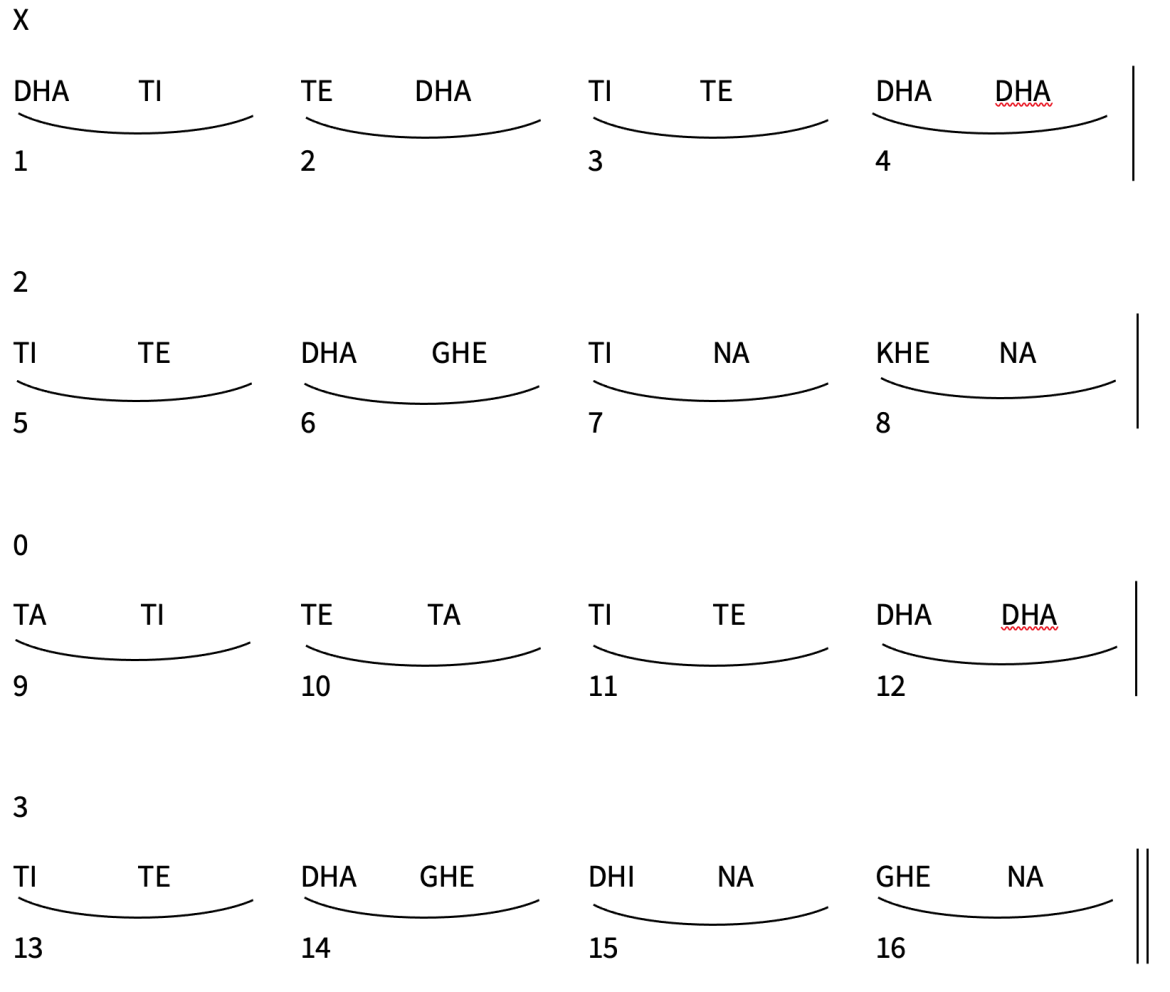Hand placement, coordination and tonal quality (with exercises)
- Play a greater range of double strokes with single strokes within a rela, including DHERE DHERE, DHI NA and TI NA
Ask learners to practise TI NA, as introduced at Programme of Study 4. The sound must resonate by using a swift action to produce the tone, and KHE must also be played at the same time as the TI stroke.
Ask learners to practise DHI NA, as introduced in Programme of Study 4 – using the same action as TI NA but replacing the KHE with GHE on the larger drum. GHE must be played at the same time as TI.
Demonstrate how to play DHERE DHERE – an extension of TI TE TI TE where the palm of the hand is covering the entire black spot on the small drum.
Introduce suitable compositions to practise these strokes, for example, Chaar Bhaag:

Chaar Bhaag is a rela, which is a composition using fast strokes to create a drum roll effect. It is made up of four different parts, each of which is played four times. In Chaar Bhaag, TA is played as NA – it is a different pronunciation of the same bol.
When learners become familiar with this rela, it can be played in dugun and chaugun, including the paltas and tihai. Between 50 and 60bpm is ideal for this kaida.
Introduce more challenging kaidas to incorporate the bols TI NA KI NA and DHI NA GI NA, for example, the Delhi Kaida:

Continue to encourage learners to use a metronome or lehra to support their playing in ekgun (single speed), dugun (double speed) and chaugun (quadruple speed).
Explore the progression of this Learning Objective
Continue exploring the current Programme of Study